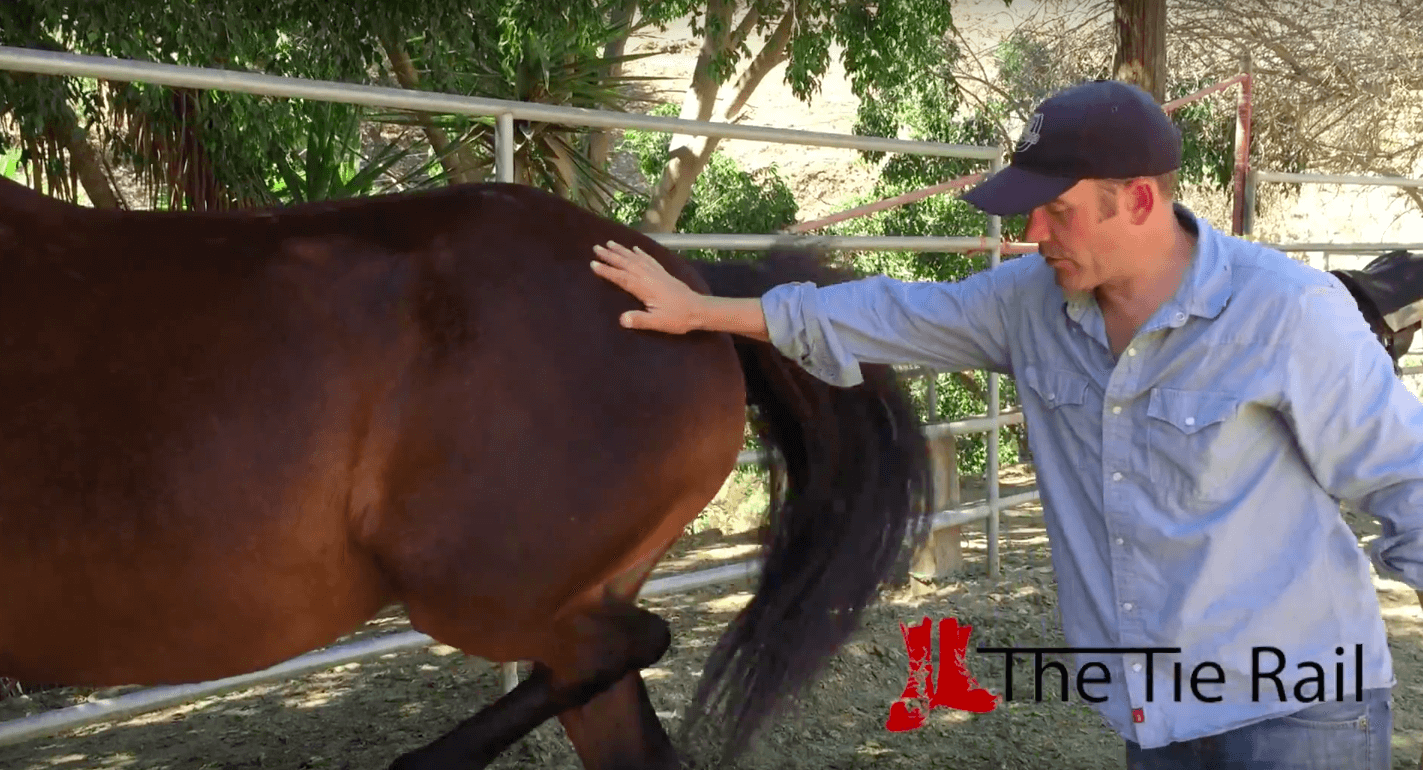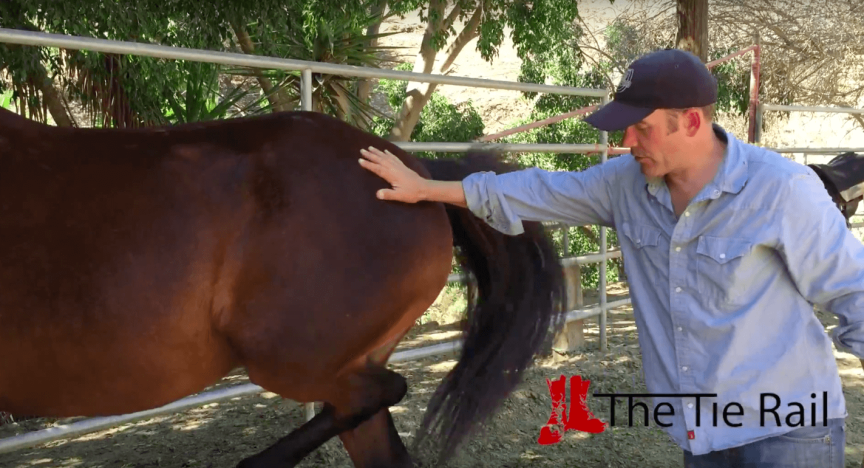Navigating horses safely is humongously important, mostly because the consequences of not being safe can be catastrophic. There are two risky areas in particular: (1) when you are approaching a horse and (2) when you are walking behind a horse.
Approaching a Horse
When approaching a horse, you don’t want to scare him. Bad things can happen when horses are scared. Remember: you’re talking about a 1,000+ pound animal, and when you tie that 1,000+ pound animal to a rail and scare him, scary things can happen to you. The key here is to make sure that you let the horse see you and smell you from as far away as possible as you approach. Making a noise, then moving in, then giving him your hand to smell, then moving in to touch the horse is the best course of action.

Walking Behind a Horse
Chances are you’ve heard this warning: never walk behind a horse. So why would you do such a thing? It’s true that normally you shouldn’t, but when you have a horse tied to a tie rail, the only way to go to the other side without going around behind the horse is to go under the horse’s neck. Don’t do this. I’ve seen too many people get hurt there. Think about it: a metal bar, a horse, and you in-between. Even if your horse is used to you going under its neck and you do it all the time, it only takes one thing (and most likely something you’ll never foresee happening) out of your control to cause a bad accident. And accidents between horses, people, and metal don’t turn out well for people. Broken bones, concussions, and worse are just a few of the options. This all may seem alarmist, but believe me, when accidents happen we (people) are the most delicate and breakable part of the equation. So the safest option here will be to go around the back of the horse. How you go about traveling around the back of the horse will determine just how safe it is.
Watch the video below for a demonstration on the safest way to approach and move around behind your horse.

